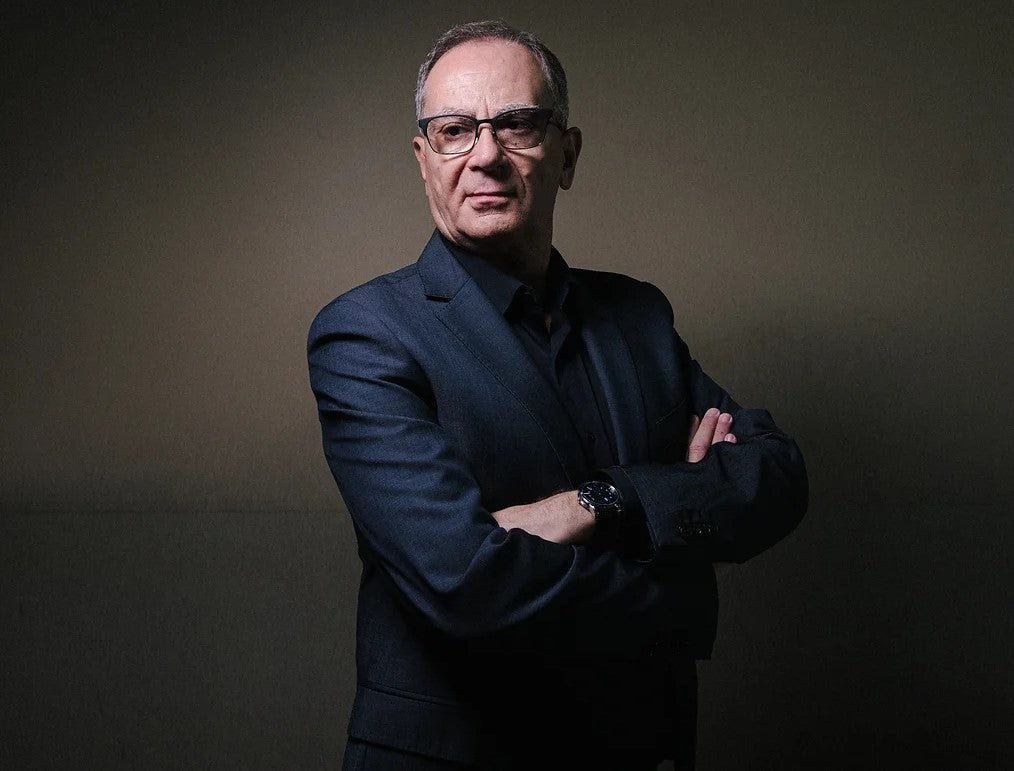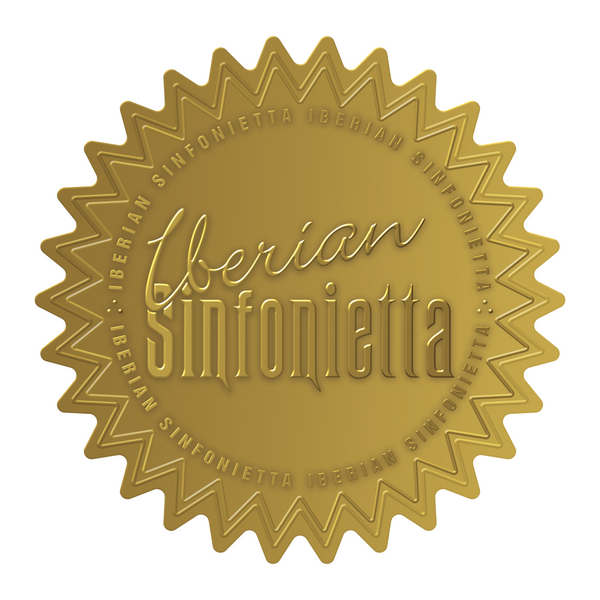
INTERVIEW WITH JORGE GRUNDMAN ABOUT THE PREMIERE OF HIS WORK 'ON THE BACK OF A NIGHTINGALE, OP. 31'
Dear audience:
We continue to unravel the keys to fully enjoy the Iberian Sinfonietta concert next Saturday, November 25. If a few days ago we knew more about the concertmaster and soloist who told us his vision of Tartini's famous score “The Devil's Trill”, today we will walk in another direction, creation.
As you know, each Iberian Sinfonietta concert is filled with incentives, the repertoire, the orchestra and its performers, the premieres. On this occasion and faithful to a way of doing things, we will have a premiere: On the back a Nightingale, Op. 31 by Jorge Grundman , where the flutist from Malaga Ángel Pareja Francisco will be the soloist in charge of its premiere before the public of Fuengirola . It will be a highlight of the concert. We spoke with Maestro Grundman about his premiere and his career.

Next November 25 you will premiere On the Back a Nightingale, Op. 31 , what are your feelings?
I am very excited about the premiere. After all, it is a work that I finished writing in 2012. It is said soon, but eleven years have passed. Nothing more and nothing less. While it is true that thanks to the German flutist Gili Schwarzman we have been able to hear it on a recording, it is no less true that it has never been premiered live. It has been many years since I left the stage, among other things, because I had a lot of stage fright and did not enjoy performing live. Perhaps the remedy was worse than the illness, because I get frankly nervous before any premiere since I want my work to reach the audience, and for them to understand it, and for the musicians to make it theirs, and I always have a strange fear of not being able to connect with the audience. I say strange because I don't want to say fake, to avoid sounding pretentious. But until now I have had the divine grace of being able to connect with musicians and the audience. Although that doesn't mean it will always be like this...
When did this work emerge and how did it become part of the Iberian Sinfonietta repertoire?
This work was commissioned by the Spanish Chamber Orchestra but was never premiered. I was unlucky that the concert could not be finished programming, since at that time writing consonant music was not or did not enter the minds of many of the programmers. Well..., the opinion of programmers about these aspects has not changed much today. During the pandemic I tried to contact Gili Schwarzman whom I had previously seen with Alondra de la Parra. And without thinking twice, I decided to write to him. I sent him a link to my first sonata for flute and piano "Warhol in Springtime" and, as they say, he fell in love with my musical charms. The rest is history and ended with a CD recorded for none other than Sony Classical with the Navarra Symphony Orchestra conducted by Guy Braunstein. As a result of that collaboration, the possibility of working with the cellist Torleif Thedèen and Eduardo Frías and later with Alisa Weilerstein also arose. Actually, that's how I've always been working. I write a work, I make it known to people I don't know and then word of mouth does the rest. Let's say that things are going on among musicians... My editor, Javier Briongos, whom I know from the period in which I began to collaborate with Ara Malikian, has not stopped supporting me, first in Wise Music Classical and now in Miotta and Molière and He began to look for flutists who could fit the work. He contacted Ángel Pareja Francisco, and here we are with the greatest excitement in the world.

How do you want to convey your ideas about it, beyond the score?
As a general rule, when I write a work it is based on a story. Invented or not by me, but something I want to tell. In this case, the flute concerto is titled "On the back of a nightingale" and aims to tell the final journey of our soul from the moment we die until it says goodbye to all our loved ones. But not just describing the trip, but with the idea of explaining to a small child why a loved one is no longer coming home. Thus, the work with a pizzicato in the double basses that emulates the heartbeat and ends the beat with it until it disappears. As a Christian, for me death is not the end, but rather another stage of the journey we began when we were born. However, not everyone is a believer and some, for example, say that instead of heaven, the soul goes towards the pink of the sunset. Well, this is what the story is about. How to explain to that child that we all have inside us, that journey that we still have to take. And I invented the legend that the soul climbs on the back of a nightingale, which is played by the flute, with its songs and flutters and its journey towards the clouds. Until it reaches one of them and rests on it, so that the soul looks down and sheds a tear that quenches the thirst produced by the sadness of loss to all those who still remain with us. Told this way, it may seem as if it were a pretentious work, but it is better to listen to it and then, knowing this story that, by the way, it is not necessary to know beforehand to understand it, begin to reflect on how we would do it.
At what point are you at a compositional level?
In one that I can't quite believe. I started writing the music I heard in my head very late. Because I believed that my tonal and consonant language was not going to interest anyone. It was Ara Malikian who, after working with me on my first works, insisted that I should write and share all the music that was in my head, that there would be many people who would enjoy it. So I did it. I wrote to the Brodsky Quartet, they asked me for more and here we are. But I started writing in 2003. In other words, only twenty years ago. And I just finished... my opus 100! Nothing more and nothing less than 100 works. Sonatas, concertos - for piano, cello, flute, string trio - operas, lyrical songs, quartets, trios, a partita for violin and several works for choir and symphony orchestra. I have been fortunate that great performers are interested in my work and ask me to write something new for them or that they want to premiere my works in places and countries that were unthinkable for someone who only wanted people to be excited when listening to my notes. I have just premiered a cantata lasting more than half an hour in Mexico as a tribute to the 50th anniversary of the Autonomous University of Ciudad Juárez and it has touched me deeply from what I have been told. It seems that it doesn't matter what country they listen to what I do, God has given me the ability to communicate with the audience.

Future projects...
I will soon premiere a new saxophone quartet that the Synthèse Quartet commissioned me and that will be presented at the World Saxophone Congress, the festival that brings together more than 1,000 saxophonists and other musicians from all over the world. There are several concerts already closed for next year and I have pending the premiere of my second concerto for piano and string orchestra, my concerto for clarinet and string orchestra and my second concerto for flute and string orchestra. And as ideas for writing, I'm thinking about my second sonata for cello and piano and, as seems obligatory for any tonal composer, 24 preludes for piano... But since I don't own the time I have, I don't dare to give dates to see these last two ideas come true.
Something that remains in our minds.
Well, the truth is that I would like two of the concerts that I have already mentioned to be recorded and released. My second concerto for piano and string orchestra is titled "A Glimpse of Hope" and I wrote it thinking about Ukraine and how we should always think of any excuse to try to make peace, anything no matter how small. be. And it turns out that, after the events of the last few days, I think it is very necessary to be able to deliver this message as soon as possible. And my first concerto for clarinet, reeds and string orchestra is titled "History of a Smile." Something that is also quite lacking these days. I hope they find a soloist and orchestra soon and they can be recorded and released. I don't know why, but I'm more into recording and releasing than releasing and recording. Brand new is only enjoyed by the audience in the room. But a recording remains available to everyone.
We say goodbye to the Maestro, thanking him for his time and dedication and wishing him all the luck at the premiere of his work at the Peace Palace in Fuengirola next Saturday, November 25 .
Jorge Rodríguez Morata
Pedagogical content coordinator.
